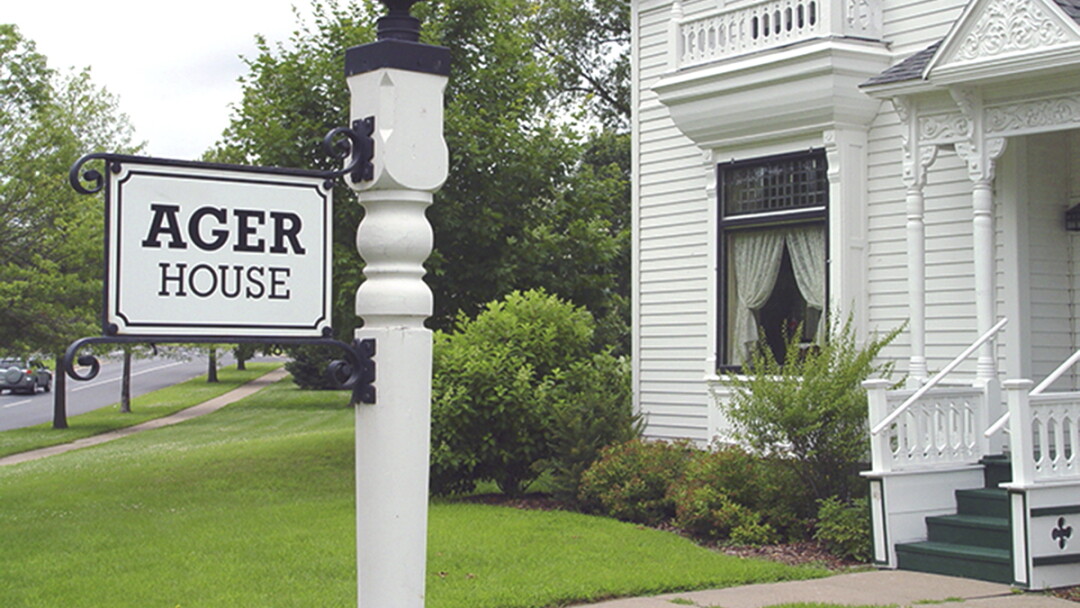Examining Ager
new film tells the story of famed Norwegian immigrant writer

Ask people almost anywhere in Eau Claire if they know where the Waldemar Ager Museum is and you are likely to get a blank look. Even though many people pass the house twice daily on West Madison Street as they make their way to and from work, relatively few of us have attended events or open house days at the house. Most people in Eau Claire have never heard of Waldemar Ager.
Ivar Lunde, a professor emeritus of music at UW-Eau Claire, decided to do something about that. He made a film to celebrate Ager’s city and Ager himself, a man called an Immigrant Idealist by one of his biographers. As it turned out, Lunde’s film evolved into a three-part exploration that he has titled Eau Claire, The Ager House, and Waldemar Ager.
The premiere screening of the film, co-sponsored by the Ager Association and the L.E. Phillips Memorial Public Library, will take place at 7pm Tuesday, Sept. 6, at the library. A discussion with Lunde will follow the screening.
In the early years of the 20th century, Waldemar Ager’s Norwegian-language newspaper was reaching 7,000 subscribers every week. His readers found that Ager was a keen observer of life, a persuasive writer, and a man of firm convictions, particularly where the evils of drink were concerned.
Not quite 100 years separate the birth years of Ager and Lunde. Both grew up on Oslofjorden, an inlet south of Norway’s capital city, Oslo – Ager in Fredrickstad on the eastern shore, Lunde in Tansberg on the western. Ager came with his family to Chicago as a teenager in 1885 and found work as an apprentice printer. Lunde became a musician and started playing professionally in Norway in his 20s, but he too eventually came to Chicago where he worked for a time in a furniture store.
In his youth, Lunde had an interest in making films but not the cash to do so. By the 1990s, however, Lunde had purchased a TV-quality video camera and was making films of various kinds. Now he owns Skyline Publications/Skyline Studios. The company has high-definition equipment and audio and visual editing stations, and it has created a collection of professional productions such as a Grammy-nominated CD, music for various instruments, and videos of work by Eau Claire writers.
 So it is clear that Lunde was the right man to make this film. If you attend the screening, you will see important buildings and sites in the history of Eau Claire. You will find Ager at the Barstow Street office of Fremad Publishing, where he put together the issues of a newspaper that continued publication until 1941, the year of his death. And you will discover that, as the publisher of Reform, Ager was an important public figure. In the early years of the 20th century Ager’s Norwegian-language newspaper was reaching 7,000 subscribers every week. His readers found that Ager was a keen observer of life, a persuasive writer, and a man of firm convictions, particularly where the evils of drink were concerned. His newspaper was a voice for temperance and prohibition. But Ager was also a promoter in other ways of the public good. He had a hand in the arrangements to establish a Carnegie Library in Eau Claire and also assisted with the founding of Luther Hospital.
So it is clear that Lunde was the right man to make this film. If you attend the screening, you will see important buildings and sites in the history of Eau Claire. You will find Ager at the Barstow Street office of Fremad Publishing, where he put together the issues of a newspaper that continued publication until 1941, the year of his death. And you will discover that, as the publisher of Reform, Ager was an important public figure. In the early years of the 20th century Ager’s Norwegian-language newspaper was reaching 7,000 subscribers every week. His readers found that Ager was a keen observer of life, a persuasive writer, and a man of firm convictions, particularly where the evils of drink were concerned. His newspaper was a voice for temperance and prohibition. But Ager was also a promoter in other ways of the public good. He had a hand in the arrangements to establish a Carnegie Library in Eau Claire and also assisted with the founding of Luther Hospital.
In addition to writing articles and editorials for the Reform each week, Ager was busy as an essayist, lecturer, and author of fiction (including several novels and collections of stories). Ager’s typewriter stands today on his desk at the Ager Museum. Preparing his film, Lunde discovered Ager’s intellectual and artistic foundations by reading his works in their original Norwegian. And he interviewed Ager Association members to find out more about other aspects of Ager’s life story. The film reveals that Ager had earned significant admiration for his work as a writer and public lecturer. In 1912 he was listed in Who’s Who in America. In 1923, he was awarded Order of St. Olaf by King Haakon VII of Norway. In 1929, St. Olaf College recognized Ager with an honorary Doctor of Letters (Litt. D.). That Ager also won the love and respect of his friends is marked by their gift to him of $1,000 on his 50th birthday.
But, as the film demonstrates, Ager’s belief in the importance of one’s native language for the expression of one’s ideas and values has not served him well in our time. Few of us read Norwegian. Only a few of Ager’s essays, stories, and novels have been translated into English. Let the film inspire you to find out more about this very interesting man.
Premiere of Eau Claire, The Ager House, and Waldemar Ager, a film by Ivar Lunde • Tuesday, Sept. 6, 7pm • L.E. Phillips Memorial Public Library, 400 Eau Claire St., Eau Claire • FREE • agerhouse.org






















